AWS Compute Savings Plans: Are They Right for You?

Let's explore what it takes to purchase a Reserved Instance in AWS.
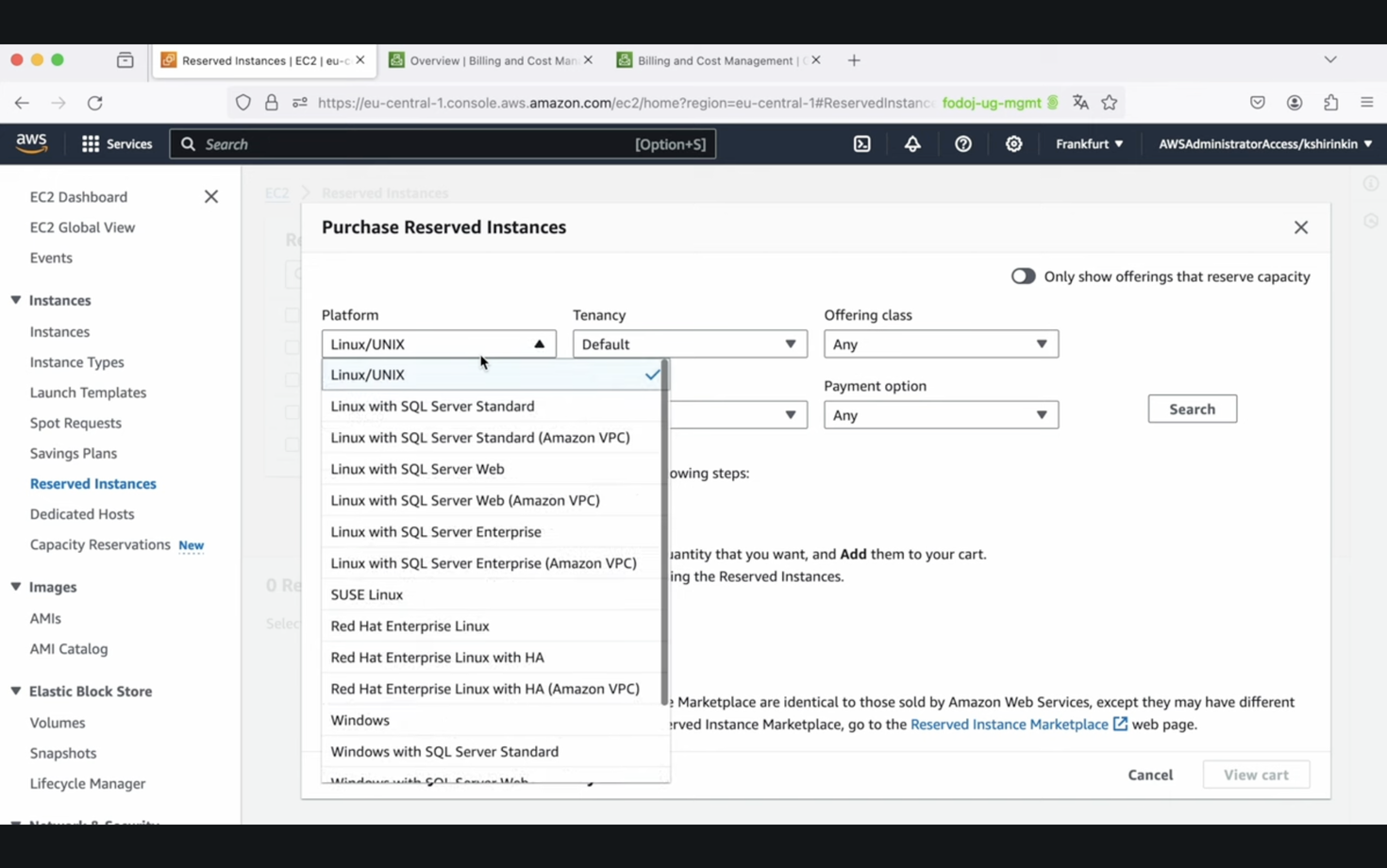
First, I can select from many different options. I can choose from among about 20 platforms and select tenancy options like dedicated or default. To select an offering class, I need to dive deep into the documentation to understand the differences between convertible and standard offerings.
Next, I need to select a specific instance type. For example, I might choose the R7g.12xlarge. I can also select the term and the payment option.
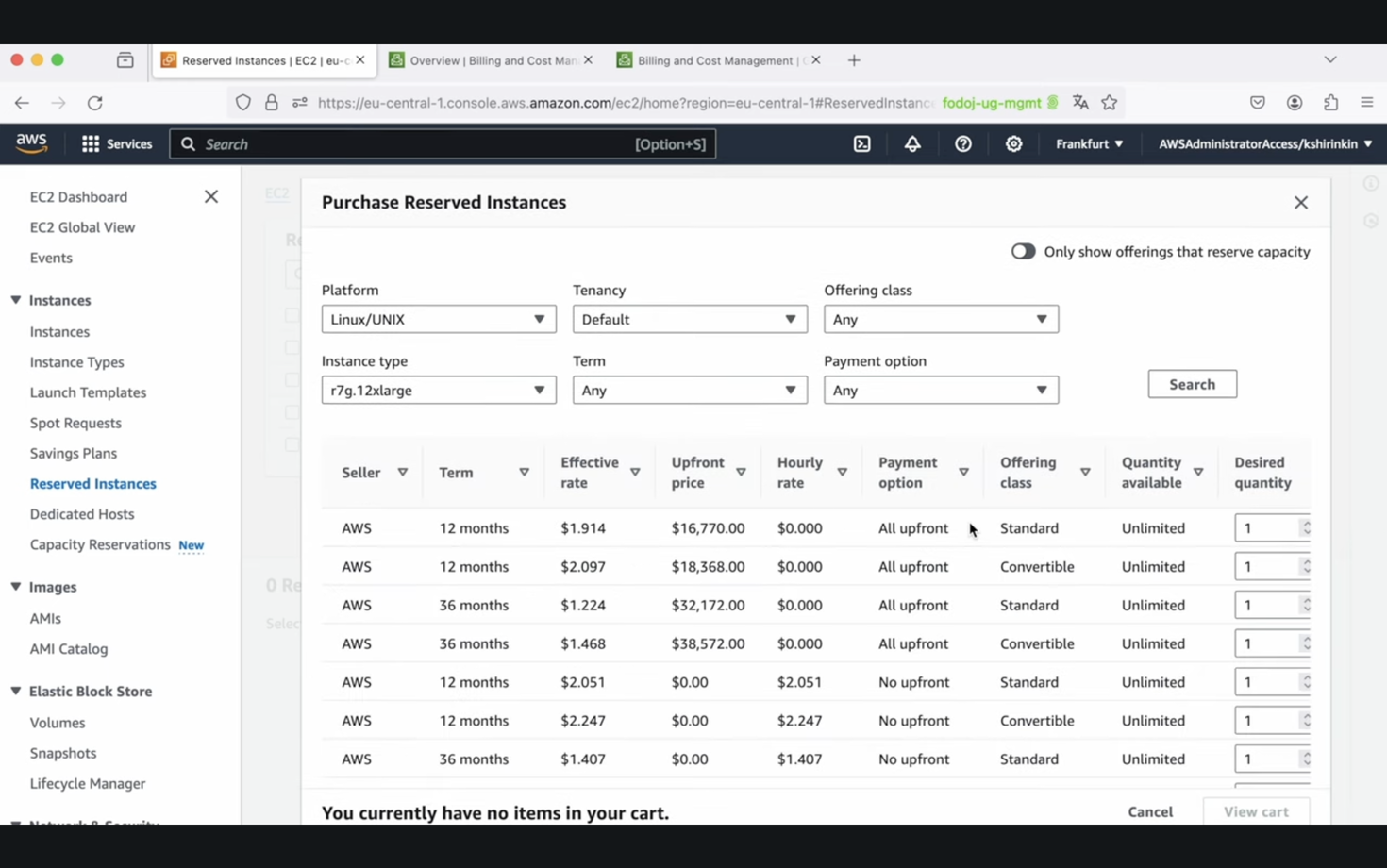
After clicking on search, AWS presents me with a list of options I can choose from, depending on the combination of payment terms like all upfront and standard, or partial upfront and convertible.
Understanding all these options and making an informed choice on how many instances of this type I want to purchase for a specific period of time is crucial.
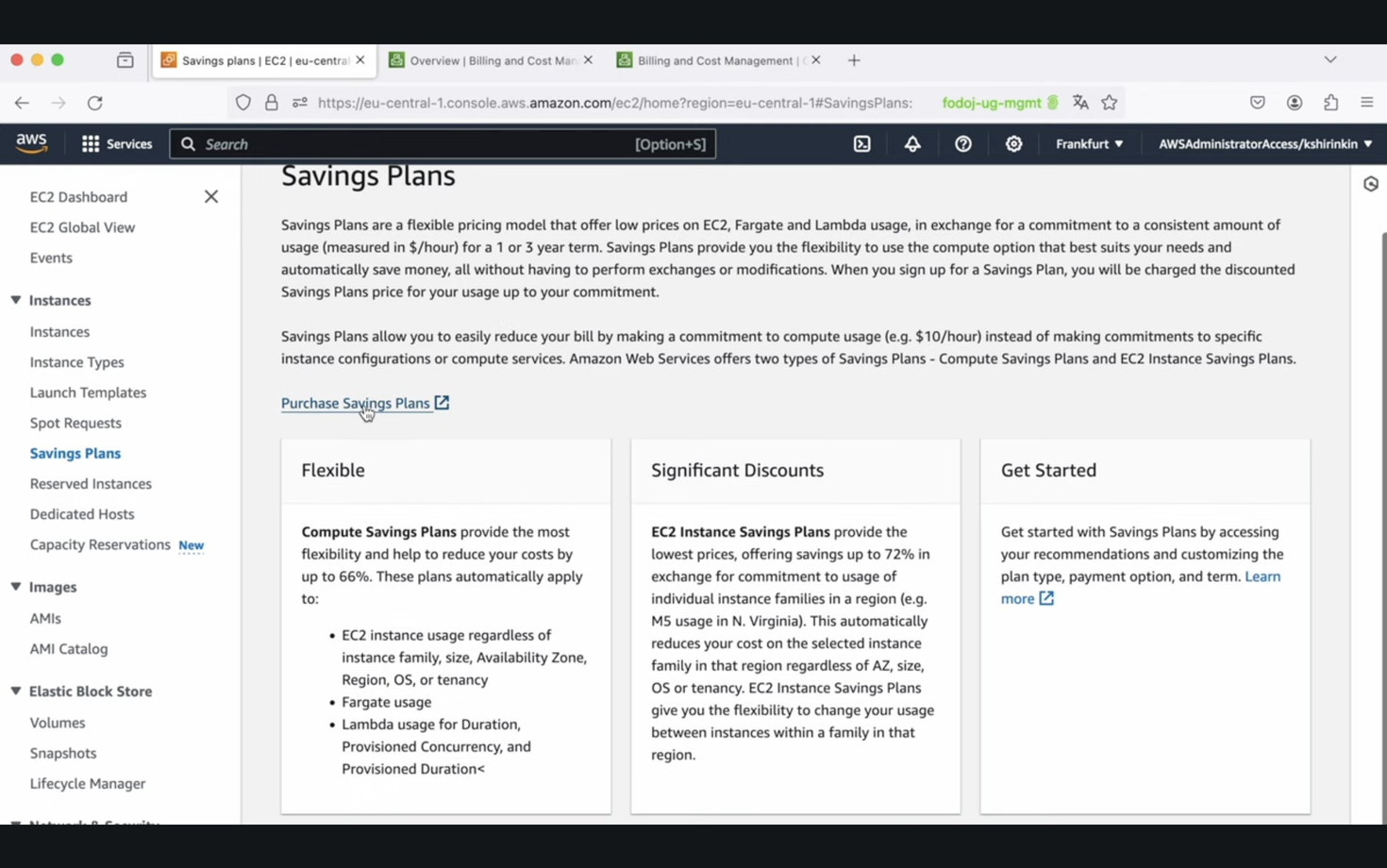
Now, let's compare this with the Savings Plans. I navigate to the Savings Plans section, click on 'Purchase a Savings Plan', and then select one of the three types of Savings Plans. The default one is the Compute Savings Plan, which applies to services like Fargate and Lambda.
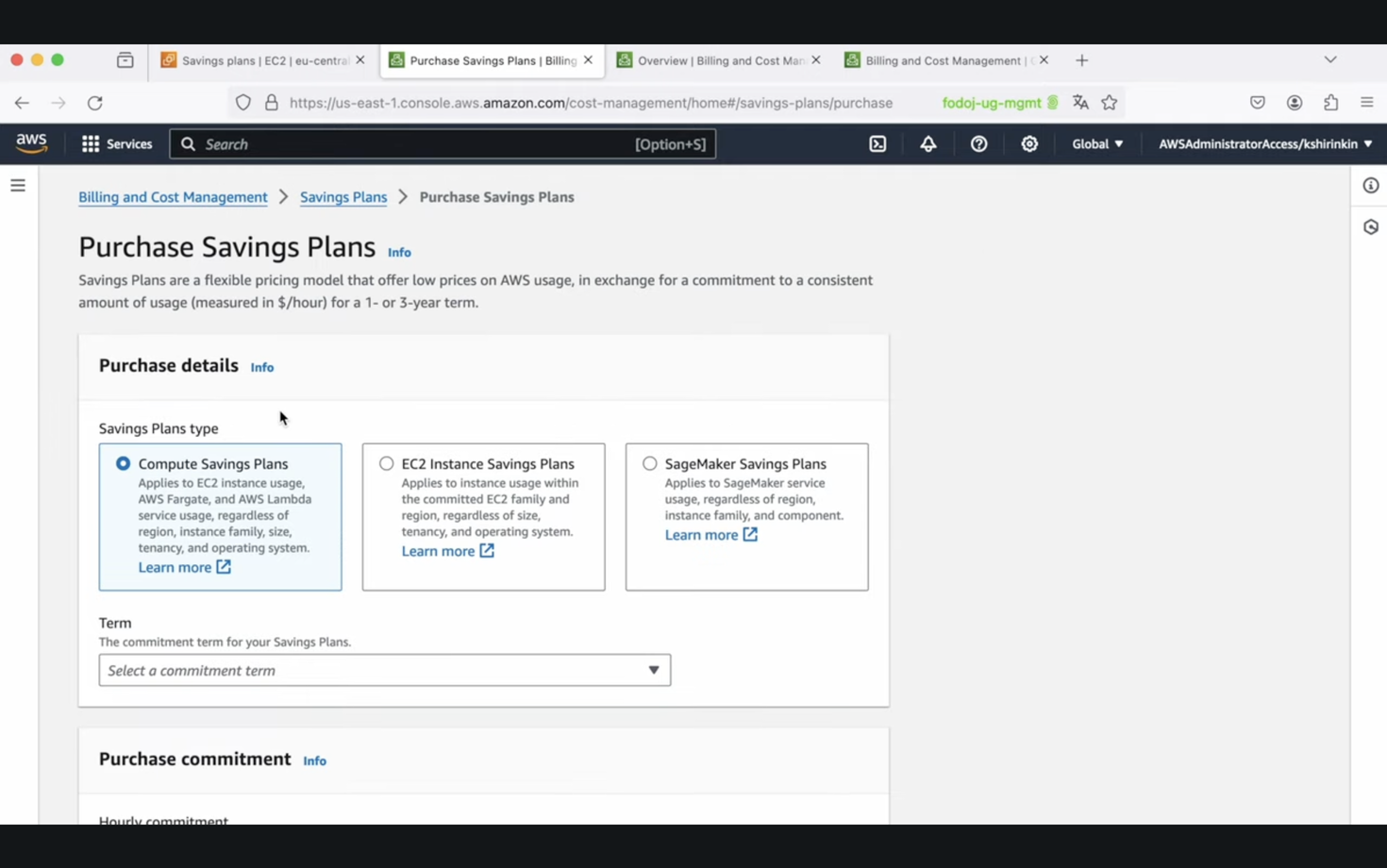
I can commit to a one-year or three-year plan and specify my budget. For example, I might decide to spend $2 per hour without any upfront payment. This means I'll be charged $2 every hour of every day for 12 months.

Depending on which AWS resources I use, the discount will automatically apply to these resources, consuming the hours I've committed to.
So, there's no need to worry about which instance family, type, or offering class I’m choosing. Instead, I can just say I'm ready to spend $1,500 per month or $17,500 per year on my compute needs, and AWS figures out the best discounts for me, typically saving me between 20-30% for a one-year plan with no upfront commitment.
To properly select your hourly commitment, it's essential to know how much you are currently spending on AWS. This involves following the steps we described in one of our previous articles about activating certain features to get this data.
You will then see a graph in your Cost Explorer showing daily expenditures. This amount fluctuates; it’s generally less on weekends and more on weekdays, with occasional spikes due to major events.
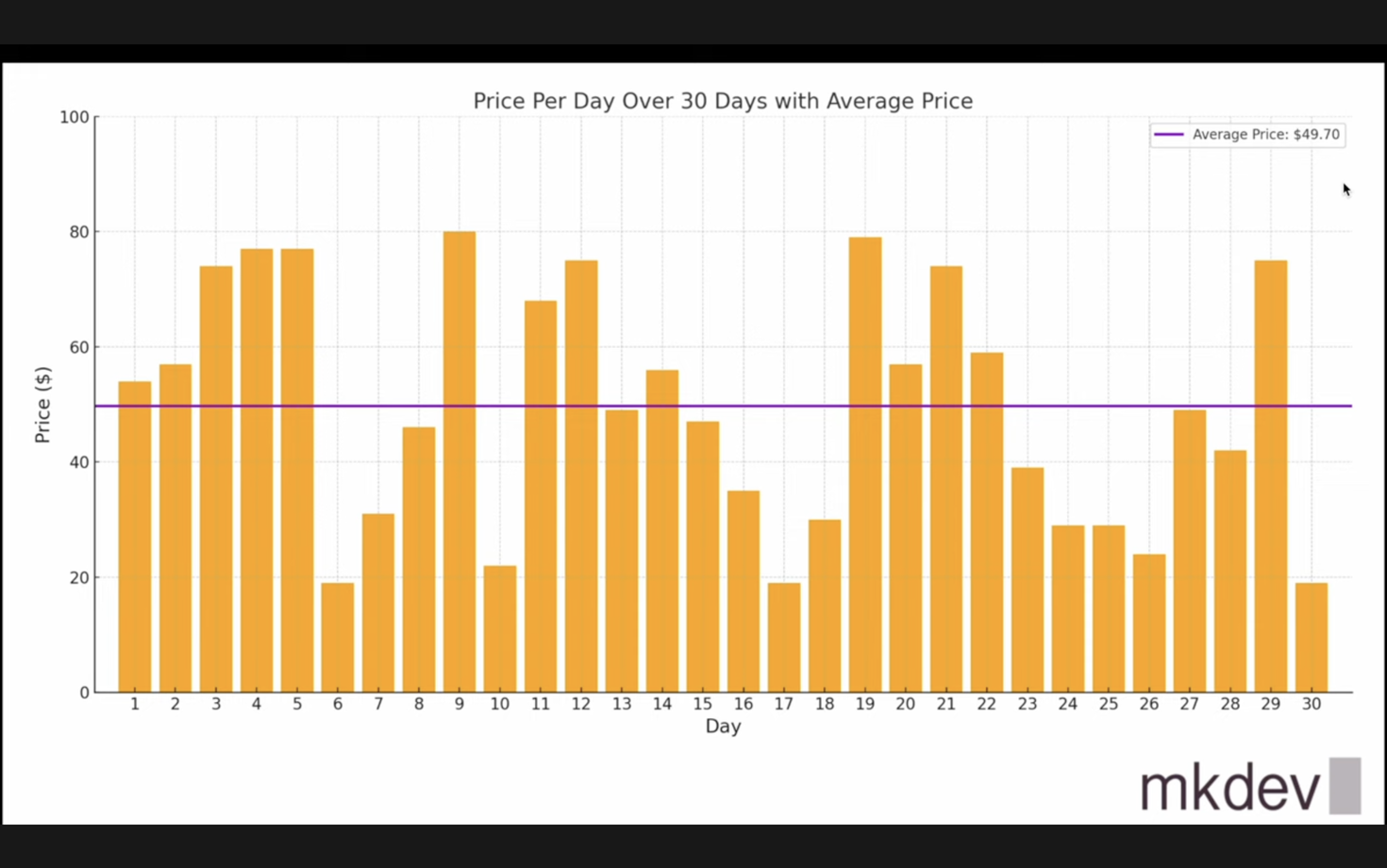
From this, you can calculate the average daily cost, which in this scenario would be around $49.70. Dividing this by 24 gives you the hourly rate. However, don't base your hourly commitment on this average alone, because once committed, this money buys resources at a discounted rate. If you commit to spending $50 per hour outright, you’ll likely only utilize about 70% of this due to the discounted rates.
A good practice is to deduct 35-40% from the average hourly cost. So if your expenses average $100 per hour, consider committing to $60-70 per hour. This approach should cover all your compute costs under the Savings Plan. I would even suggest leaning towards a 40% reduction because future cost optimization efforts might reduce your expenses further.
Remember, you can always purchase additional Savings Plans to further optimize or reduce your costs. However, once committed, that money is spent, so you don’t want to overcommit for 12 or 36 months just because of a miscalculation. Do your math correctly.
Besides your calculations, AWS also provides assistance in determining how much you should spend on Savings Plans. Navigate to the Billing and Cost Management console, go to the Savings Plans section in your recommendations, and AWS will suggest suitable Savings Plans based on different predictions for one-year or three-year terms with various payment options.
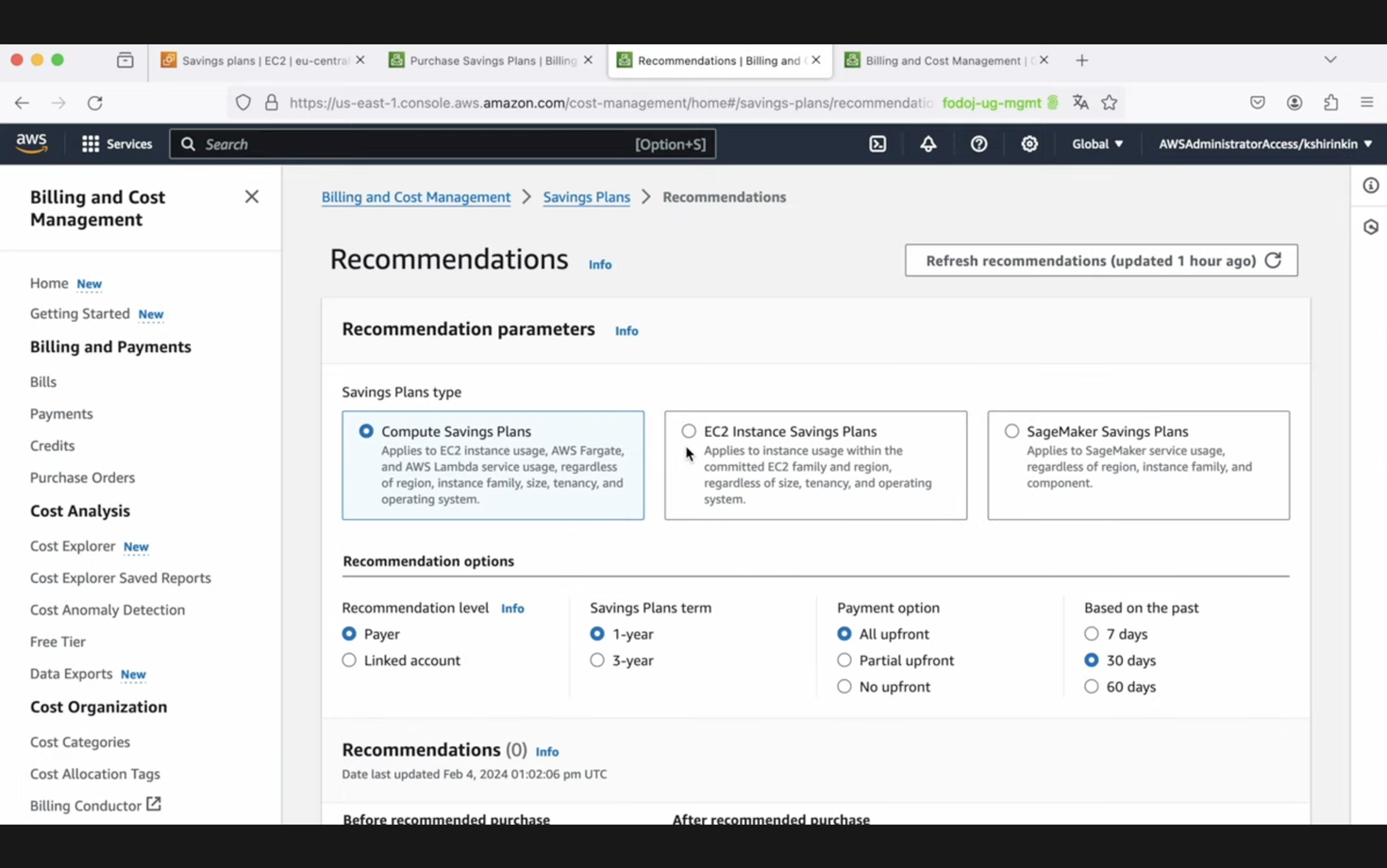
These recommendations, based on data from the last 7, 30, or 60 days, serve as a good baseline, but you still need to perform your own calculations. We discuss the necessary steps to get these recommendations in another article, outlining the five main actions required for any AWS account to begin thinking about cost optimization.
Even with these recommendations, you still need to thoroughly understand your usage and consider optimizing your infrastructure before committing to Savings Plans. A great way to understand your usage and identify necessary changes is to sign up for our Free Cloud Cost Audit, where we analyze your infrastructure over 4-6 weeks. We also interview your team to understand your usage and provide a comprehensive report on cost optimization strategies and actions, including scalability and security. Plus, we fill your backlog with actionable items that your team can implement in upcoming sprints to optimize your AWS bill.
That concludes this article. I highly recommend reading our article on the initial steps you need to take before considering Compute Savings Plans. Once you're ready, seriously consider Compute Savings Plans as a straightforward way to optimize costs without needing to manage details like instance families or tenancies. Committing to a specific amount allows AWS to handle everything else, saving you money every day.
Learn more about the cost audit and how we can help here, or fill in the application for right away:
Here's the same article in video form for your convenience:
